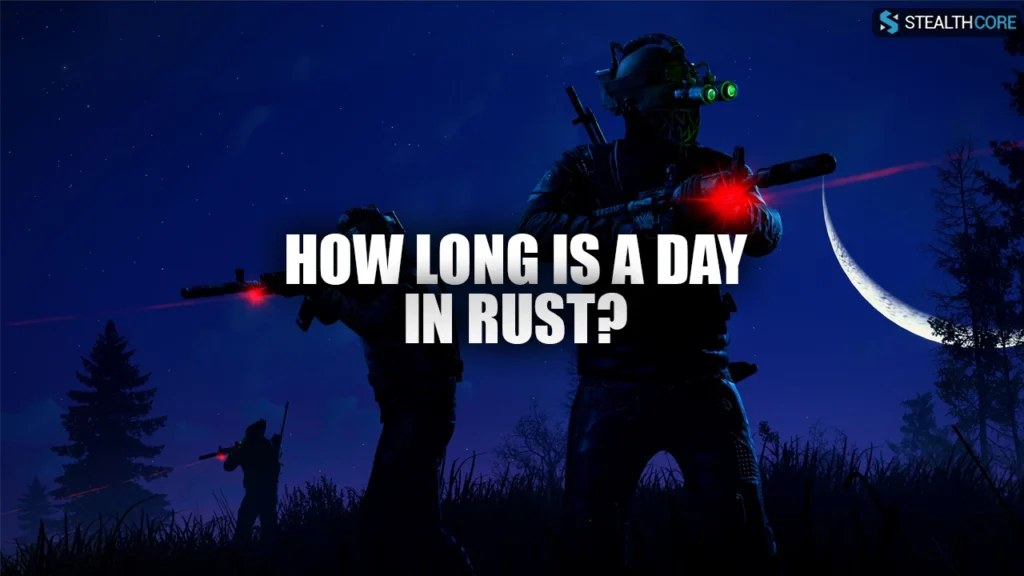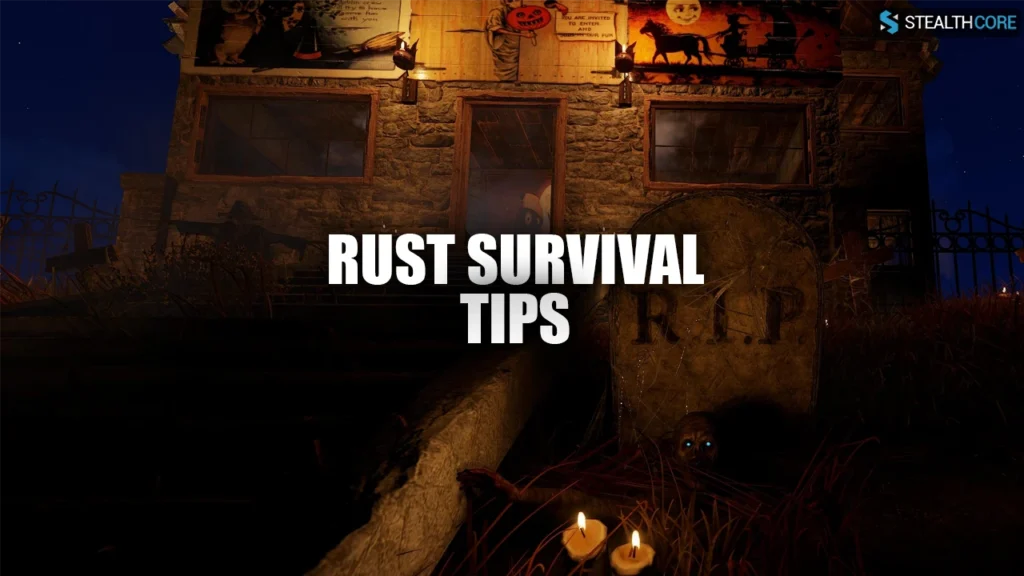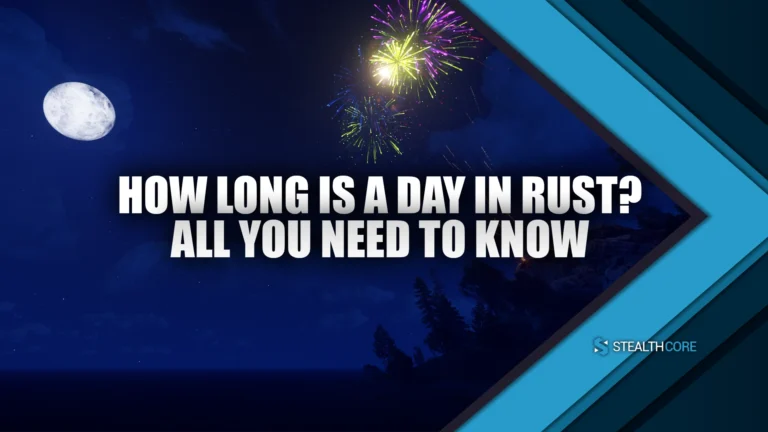Rust’s day-night cycle significantly influences gameplay strategy. During daylight, players focus on resource gathering, tool crafting, and base reinforcement. This period provides relative safety for exploration, hunting, and positioning.
As night falls, the environment transforms. Reduced visibility increases vulnerability, and raiders become more threatening. Successful players anticipate these shifts, preparing daytime defenses to withstand nighttime challenges. Effective survival requires adaptable tactics, precise resource management, and constant situational awareness.
Keep in mind that by following Stealth Core’s guide, you’ll always remain one step ahead of your opponents and dominate every single match.

How Long is a Day in Rust?
The in-game day-night cycle plays an important role in how you approach survival. On most servers, the day lasts around 45 minutes, providing an opportunity to gather resources, craft essential tools, and more. This extended daylight period is when most players take advantage of improved visibility and reduced threats, engaging in raids or exploring new territories with fewer risks.
As the sun sets and darkness falls, the night typically spans about 15 minutes. Although shorter, this segment often feels more intense as you navigate a drastically reduced field of vision. Here, stealth and caution become your greatest allies. Torches and other light sources might give you some much-needed visibility, but they also make you an easier target for others lurking in the shadows.
In total, the full day-night cycle lasts roughly 60 minutes of playtime. Over time, knowing these intervals can help you plan your in-game activities more efficiently. By making the most of daylight hours and carefully surviving through the night, you can increase your odds of outliving your opponents.

Rust Survival Tips
Surviving in Rust often comes down to a mix of strategic decision-making, resource management, and timing. While mastering the day-night cycle is key, there are numerous other tactics that can help you gain the upper hand. Here are a few essential tips to guide you on your journey.
Pick Your Fights Wisely
You don’t have to shoot everyone on sight. Sometimes, the smartest move is to avoid combat altogether. Assess your opponent—do they seem better equipped, more experienced, or part of a larger group? If so, it may be better to remain hidden or slip away quietly rather than risk losing your hard-earned gear. Playing with patience, rather than charging in headlong, can save your life and preserve valuable resources.
Secure a Strategic Base Location
Your base serves as the center role of your Rust experience. Placing it out of high-traffic zones or near useful resources can give you a tremendous advantage. Consider building near a forest for wood, close to nodes of stone or metal, and at a reasonable distance from dangerous hotspots. Reinforce your doors and walls, invest in multiple layers of defense, and always have a clear exit strategy.
Be Resource-Conscious
Scavenging the right resources at the right time can make or break your survival efforts. Prioritize essentials: secure a steady supply of food, gather enough materials to craft weapons and tools, and make sure you have clothing or armor to protect against the elements. As you become more established, you’ll want to refine your approach—crafting better-quality items and storing surplus supplies to help weather unexpected setbacks.
Use the Nighttime to Your Advantage
While the night can be treacherous, it also presents unique opportunities. With a torch, flares, or low-grade fuel in lanterns, you can navigate the darkness. Stealthy players might exploit the lack of visibility to launch surprise raids or perform reconnaissance on enemy bases. Just remember that any light source you use can reveal your position, so weigh the risks carefully.
Final Words
To sum up, understanding Rust’s day-night cycle is crucial for survival. The 60-minute gameplay cycle, with 45 minutes of daylight and 15 minutes of night, demands strategic adaptability. Success hinges on efficient resource management, careful base positioning, and smart decision-making. Players who understand these dynamics can transform environmental challenges into opportunities for dominance.
But why stop there? If you’re truly dedicated to taking your skills to the next level and dominating each Raid, check out our Rust Cheats.


